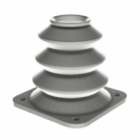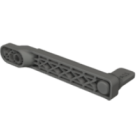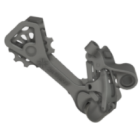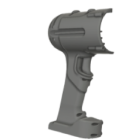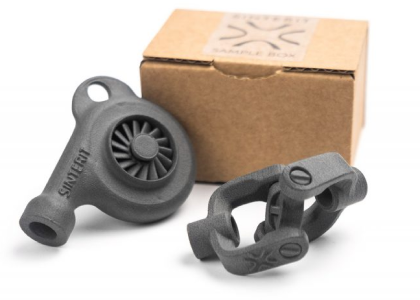The additive manufacturing process: how 3D printing builds layer by layer
The 3D printing additive manufacturing process represents a fundamental shift in how physical objects are made. Unlike subtractive methods, which remove material from a larger block, additive manufacturing builds parts layer by layer, adding only what is needed. This method allows for complex geometries, internal features, and tool-free production, all driven by digital design. To understand what makes additive manufacturing so distinct, it’s essential to break down the key stages and how they connect — from file preparation to finished part.
From CAD to toolpath: the digital workflow behind 3D printing
Every additive process begins with a 3D model. This model is typically created in CAD (Computer-Aided Design) software and represents the complete geometry of the part to be printed. Once finalized, the model is exported in a neutral format — most often STL or 3MF — that captures its surface geometry in a mesh of triangles.
This mesh is then imported into slicing software. The slicer interprets the model and divides it into thousands of horizontal layers, generating toolpaths that guide the printer. Each of these toolpaths defines how the printer moves, how much material to deposit or fuse, and in what sequence. The result is a machine-readable file (G-code, or a proprietary equivalent) that controls every action of the printer during the build process.
This digital thread — from model to toolpath — is central to how additive manufacturing functions. It ensures precision, repeatability, and the ability to simulate and validate parts virtually before a single layer is printed.
Layered construction: the core principle of additive manufacturing
The defining principle of the additive process is the creation of physical parts one layer at a time. Regardless of the technology — whether extrusion, vat photopolymerization, powder bed fusion, or binder jetting — all additive systems follow the same core logic: a new layer is formed, bonded to the one below, and then the process repeats.
Each layer is typically between 25 and 300 microns thick, depending on the technology and resolution required. The machine deposits or solidifies material only where the part geometry exists in that slice. Over time, as layer upon layer is added, the full 3D shape emerges.
Because each layer is controlled digitally, it’s possible to modify structure, density, or material distribution throughout the part — enabling performance-driven design that traditional methods can’t achieve. This is where additive manufacturing goes beyond replication and becomes optimization.
How materials and technologies shape the additive process
While the overall process is consistent, the mechanics differ across technologies. In extrusion-based systems (like FDM), heated thermoplastic filament is extruded through a nozzle. In vat photopolymerization (such as SLA or DLP), a light source cures liquid resin layer by layer. Powder bed systems (like SLS or SLM) use lasers or binders to selectively fuse powder particles in a flat layer.
Each approach has different requirements for material form, thermal control, and environmental conditions. But what they all share is the ability to build parts from digital instructions without tooling, molds, or subtractive steps. That’s what defines additive manufacturing — not just how the part is made, but how flexibly it can be adapted.
Post-processing in 3D printing: from print to final part
Once the print is complete, the part must typically go through post-processing. This might include removing support structures, cleaning or curing surfaces, and finishing touches like sanding, polishing, or coating. In powder-based systems, depowdering and heat treatment (e.g., sintering or annealing) are often required.
Post-processing is not just cosmetic; it also plays a role in mechanical performance, dimensional accuracy, and long-term durability. In many cases, post-processing workflows are tightly integrated with the design stage to ensure efficient handling and consistent quality.
Conclusion: why additive manufacturing is a production game-changer
The 3D printing additive manufacturing process transforms digital geometry into physical reality through controlled, layer-based fabrication. It’s a method defined not by what it removes, but by what it adds — and how precisely that addition is executed. From design to slicing, from printing to finishing, every stage contributes to a process that enables unmatched flexibility, customization, and geometric freedom. For engineers, designers, and manufacturers alike, understanding the logic and sequence of this process is essential to harnessing the full potential of additive manufacturing.
Explore also
- What is the 3D printing process?
- 3D printing process step by step
- How to make a 3D model for printing?
- What is 3D slicing in printing? Key to print quality and success
- Understanding 3D print settings for better results
- Printing 3D
- What is post-processing?
- Why do 3D prints fail?
Related categories




